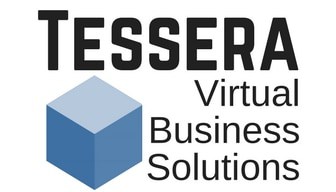1. Define your Systems
You may be convinced that you need to start creating business systems and writing the processes to go with them. But perhaps you don’t know where to begin. The type of business you own will play a part in making that decision, but there are five basic systems every business needs to keep things running smoothly.
- Marketing/Lead Generation System
How do you find and keep customers? Within this system are the processes for using social media and other marketing outlets, your networking practices, and using customer feedback and testimonials,
- People Management System
How do you hire and keep team members? This is the place to keep your practices for hiring, training, onboarding, and offboarding your team members.
- Product / Service Creation and Improvement System
What are the processes used to create and update products and services? These processes will show how your ideas move into production, how you manage customer service, and how you use product feedback to make changes to your offerings.
- Money system
How do you plan and account for the money coming in and out of your business? This system will include your budgeting, funding, accounting, and payroll practices.
- Business Support System
This is what many owners would call your business operations. This system houses all the behind-the-scenes processes needed to keep things running smoothly and efficiently. This includes project management, file management, Standard Operating Procedures, and your Customer Relationship Management system.
2. Document your Systems
If your systems are not written, then they will not be consistent as you build your business. On-the-fly processes created by whoever happens to be working on them that day will end up being unreliable at best. This will lead to “flying by the seat of your pants” for you and your team, which will in turn cause frustration for both team members and customers, as well as wasting time and energy each time the process needs to happen.
In time, the effects of inconsistent systems will begin to trickle down to your customer experience, who will begin to see the reliability of your product or service decline because you have little consistency. Unfortunately, this will lead to low customer retention and therefore, fewer referrals to your company.
System documentation can be as simple as a Google doc and a Loom video or it can entail using a knowledge base system like Systemhub. The bottom line is that having documented systems does affect your bottom line, so these should be created sooner rather than later.
3. Create Team Involvement and Accountability
If your team is already in place or is small but growing, do not fall for the incorrect idea that the business owner must create and document all the systems of a business. Entrust some of this work to your team members. Chances are that they have ideas and experience that will make this process go more smoothly than if you carried the full load of documentation.
I suggest that you, as the business owner, begin by deciding on your money systems first. This is one area that you can quickly outsource, but you will have to have some basics in place first. Set up your bank accounts and decide on your funding sources. You will need to plan a budget that you will work with as you begin documenting your money system. You may then seek help from an accountant or bookkeeper to set up all your accounting systems.
Secondly, I suggest you enlist the help of a process specialist to work with you to decide the best systems for the remaining areas of your business. This person will listen to your needs and suggest frameworks, tools, and even people who can set those areas up for you so that you can continue to grow in your role as business owner instead of taking care of unlimited details.
4. Improve on Systems over Time
Once your systems are in place, you are not finished with the systems work. As with most things in life and business, processes are fluid. You will always be tweaking and improving them. You may learn that an early decision to use a specific system needs to be changed. Or, as you grow, your company may need to expand a certain system to facilitate that growth. Don’t be afraid to make changes as you see fit.
Starting a business is not for the faint of heart. But creating business systems will go a long way in moving from a great business idea to a truly viable, thriving business.
At Tessera Virtual Business Solutions, we specialize in helping you get started creating business systems that will grow as your business grows. We offer strategy sessions that will walk you through the steps needed to get your systems in place. Contact us today to set up a call to see where we can best serve you. We guarantee it will be time well spent.


